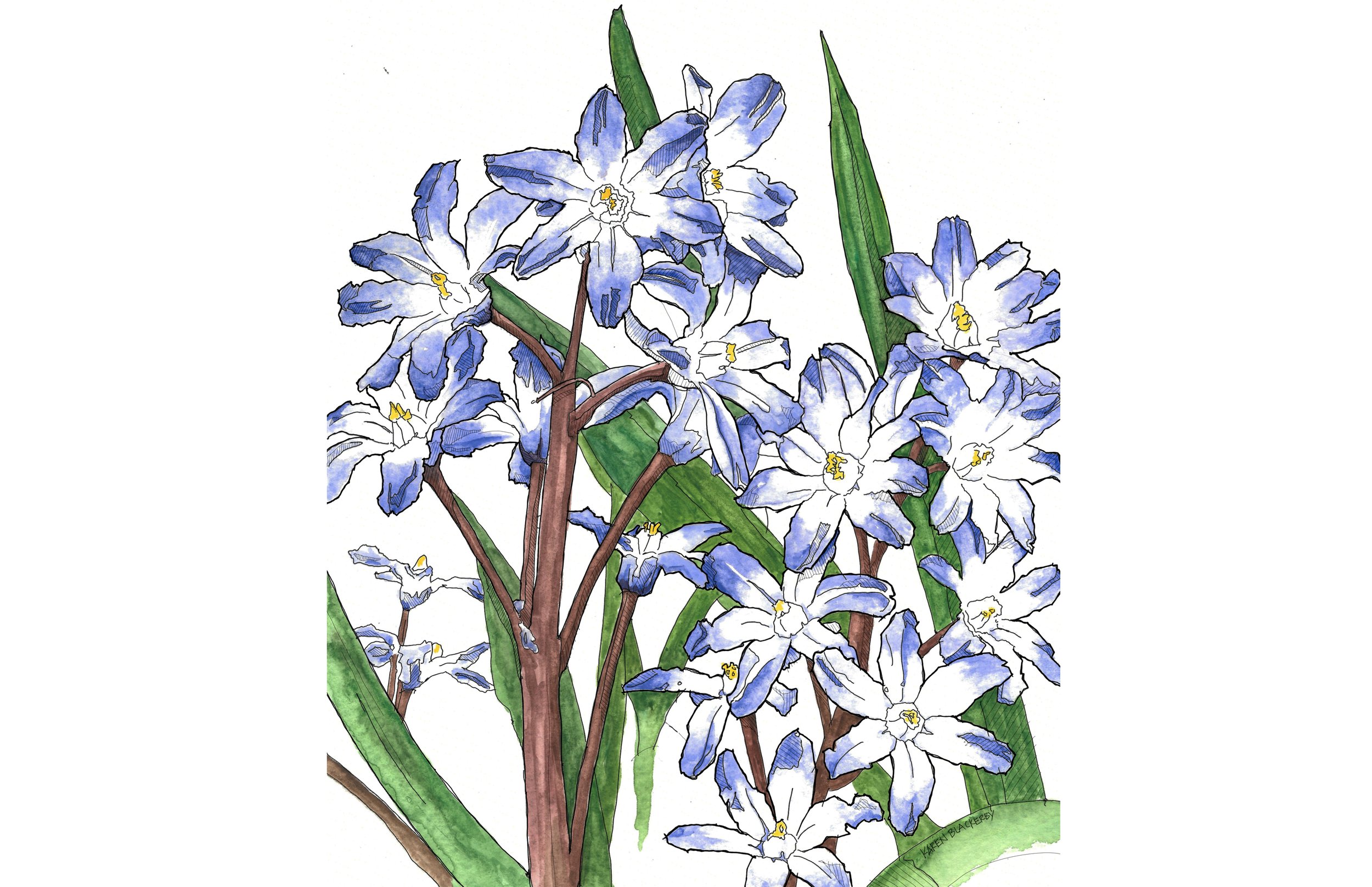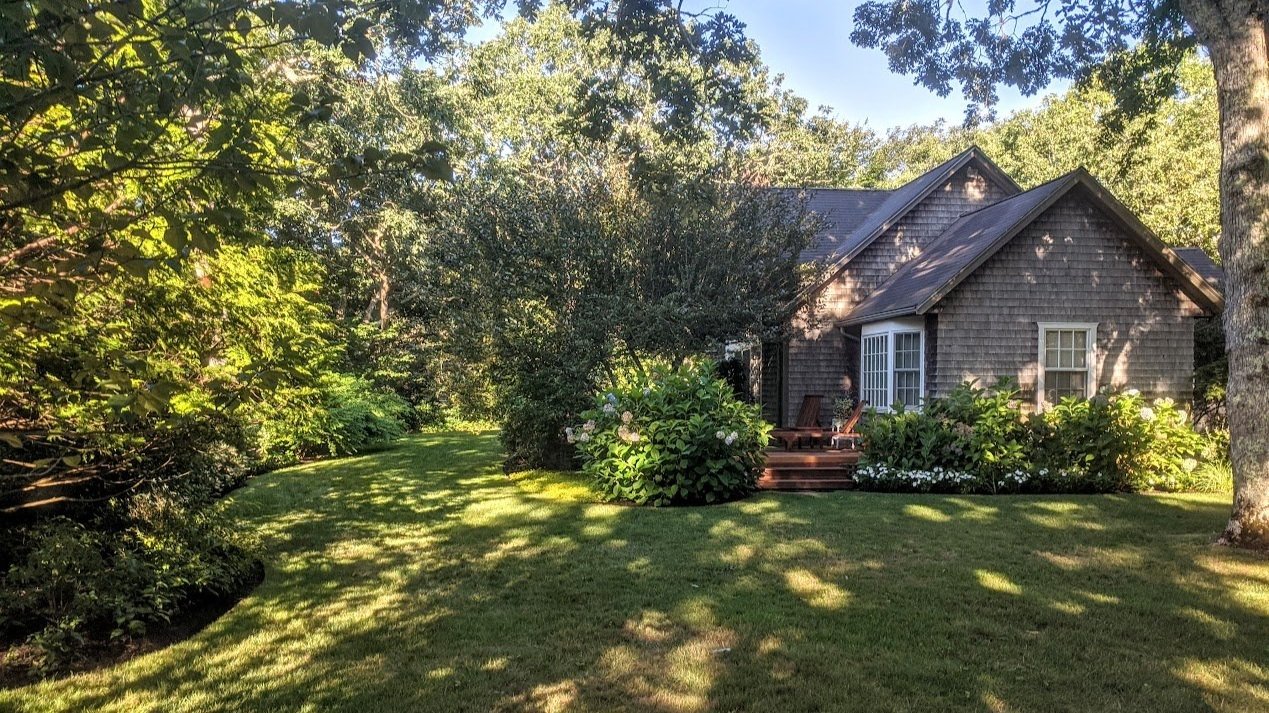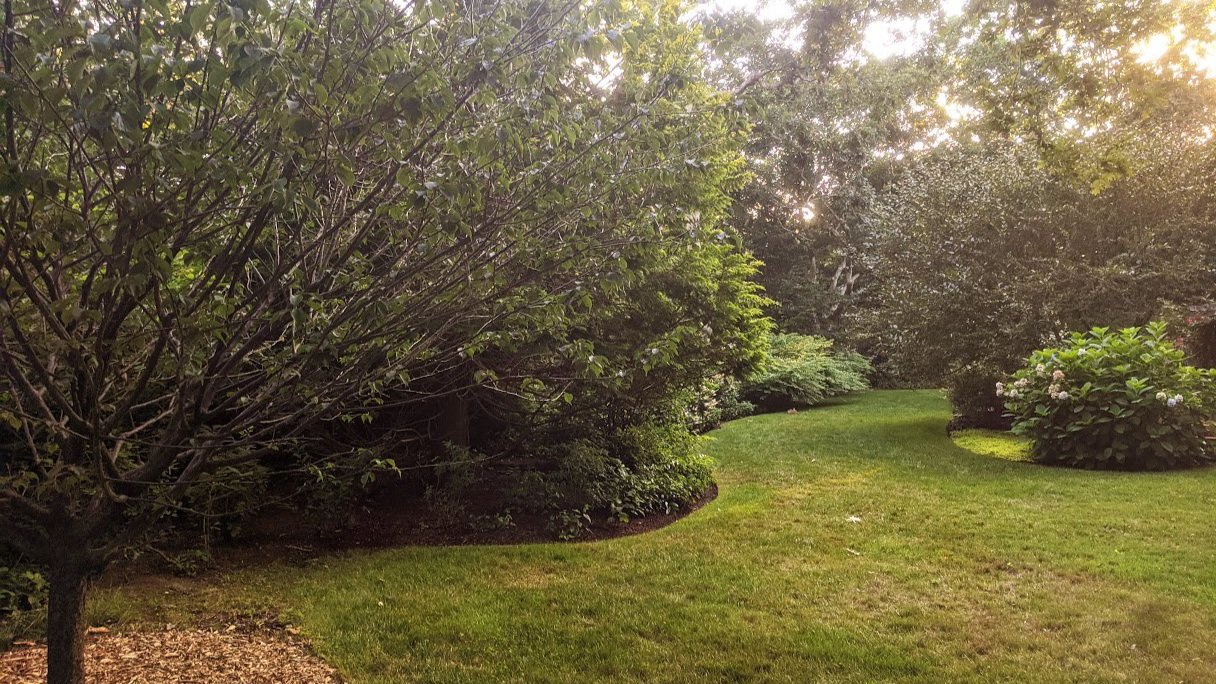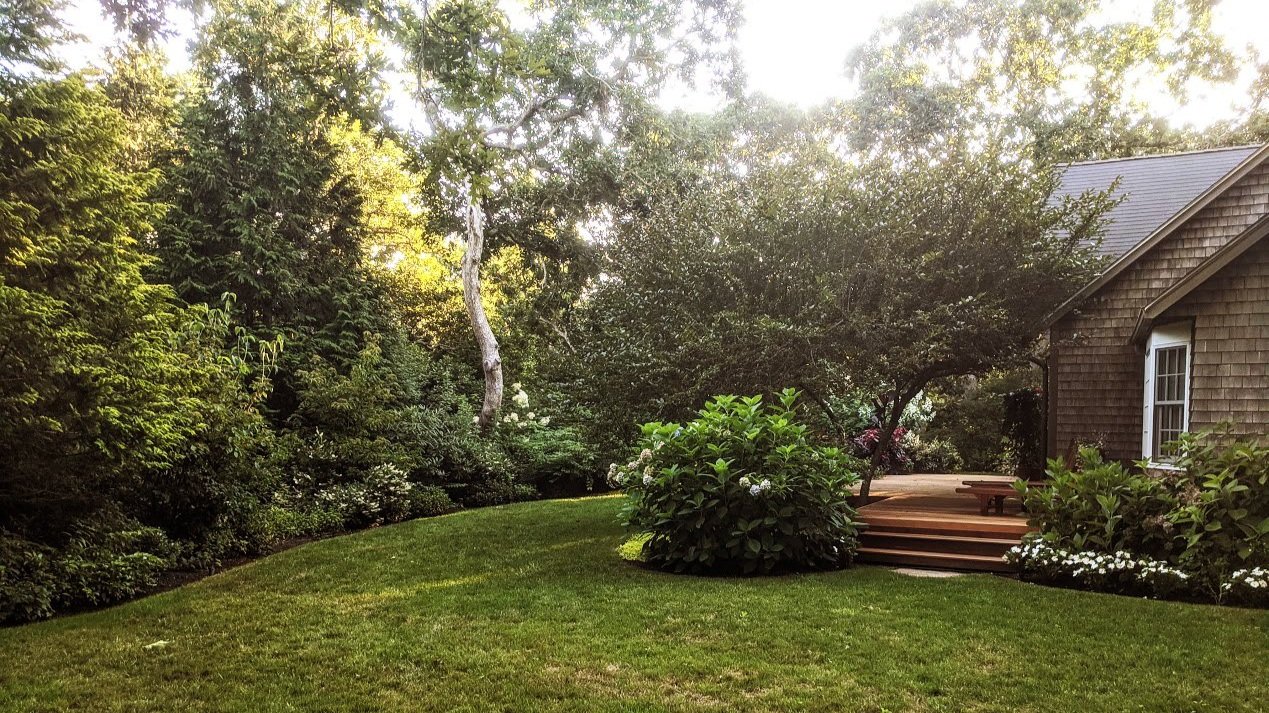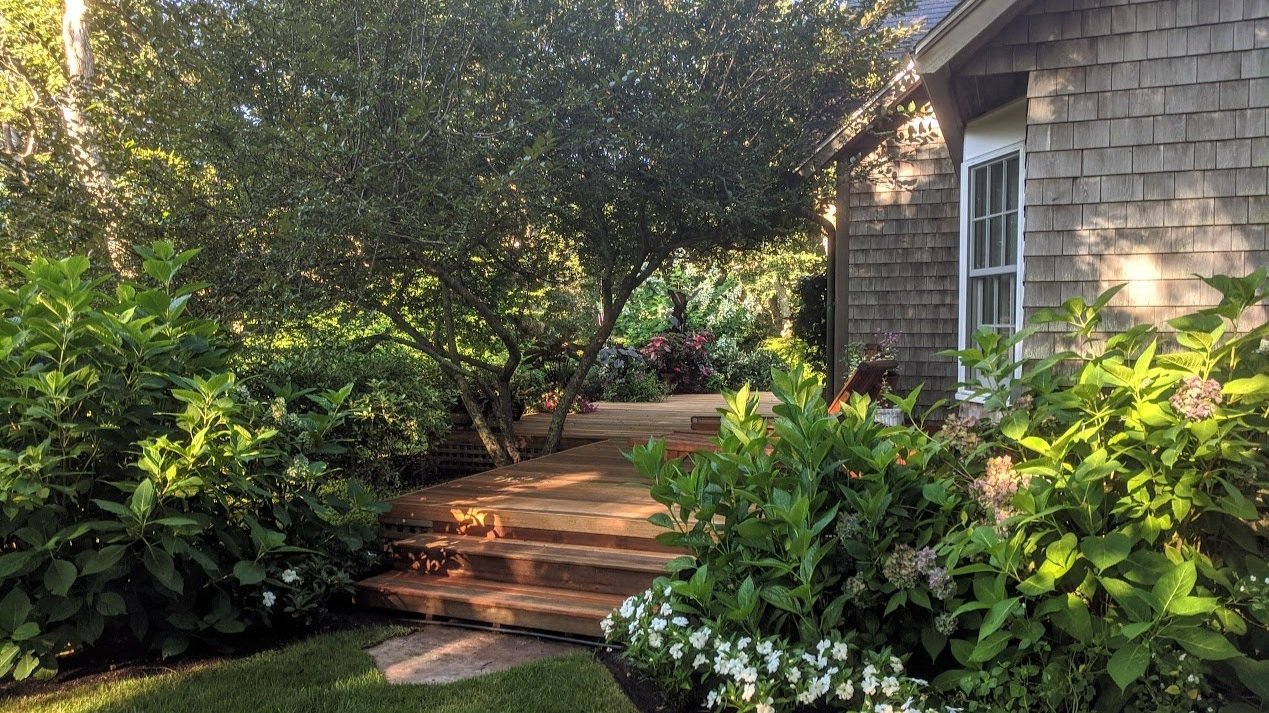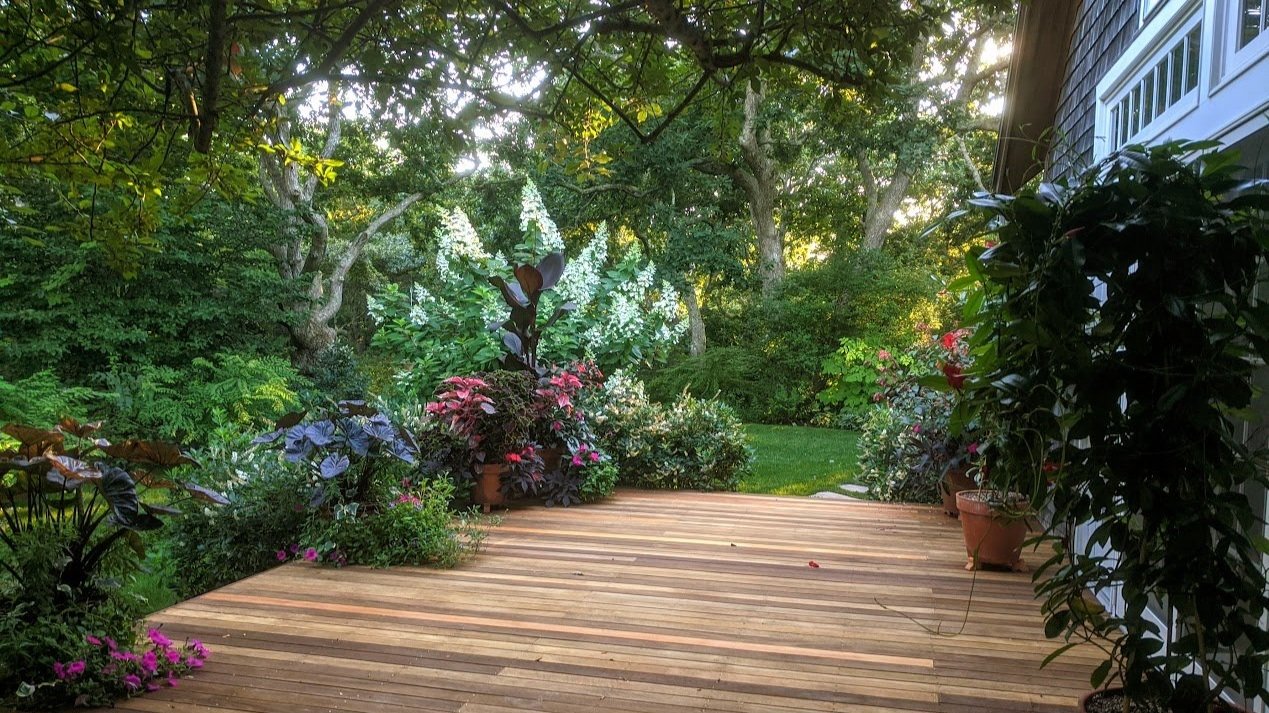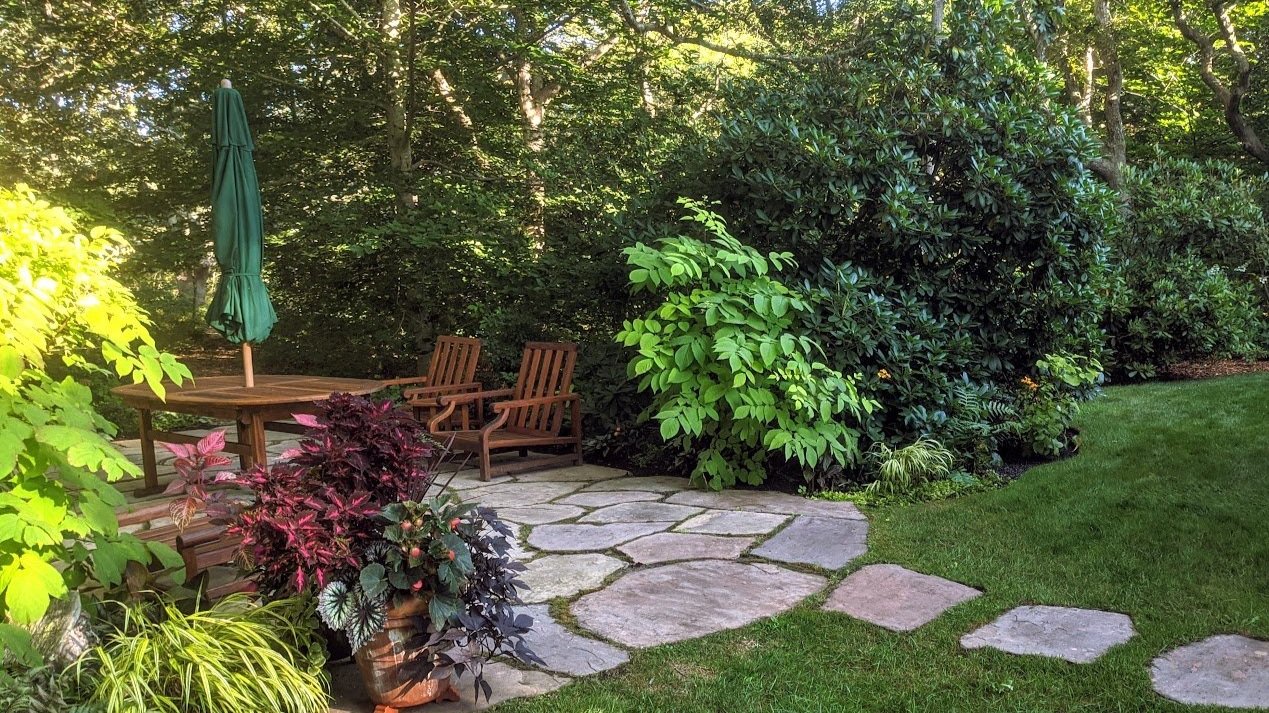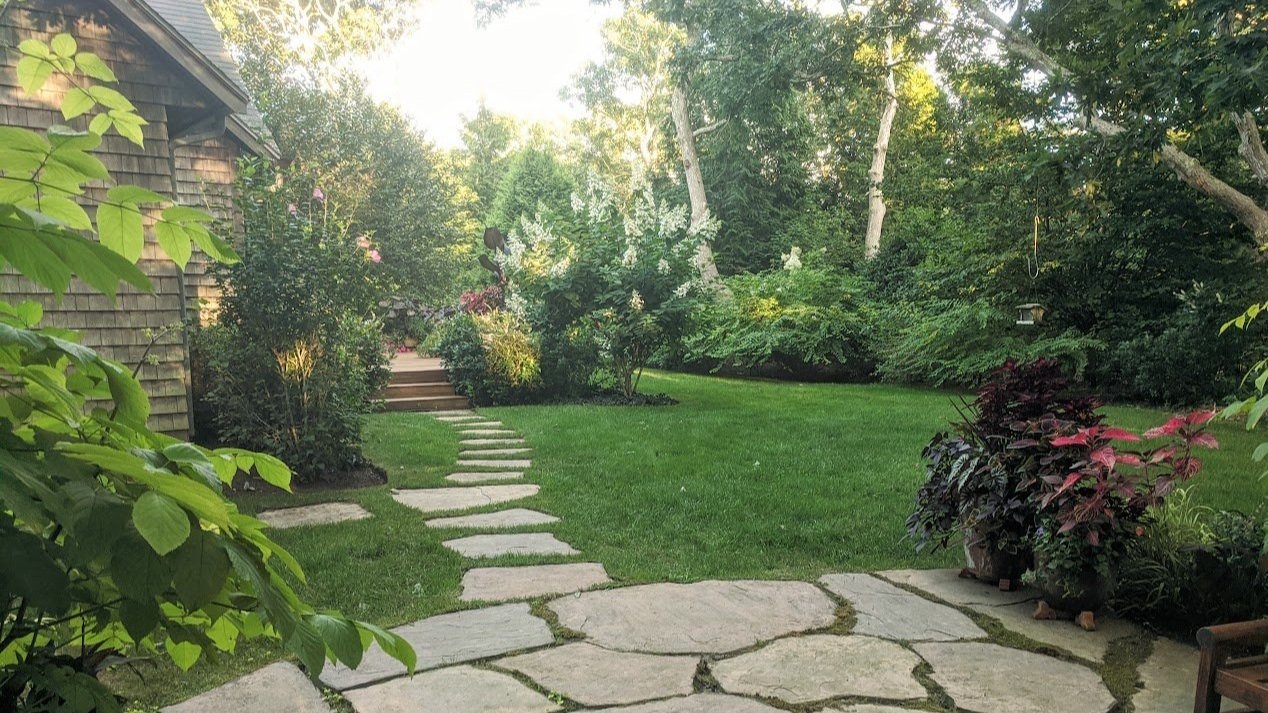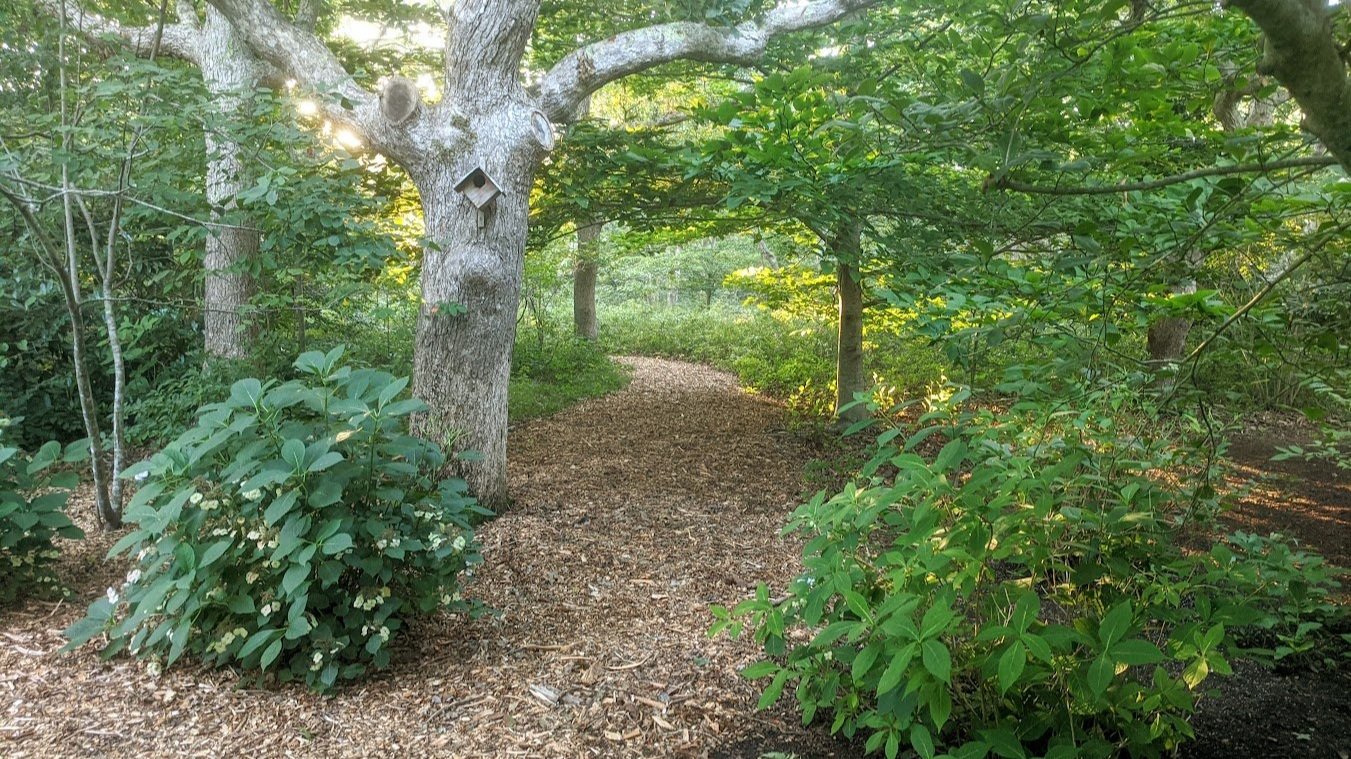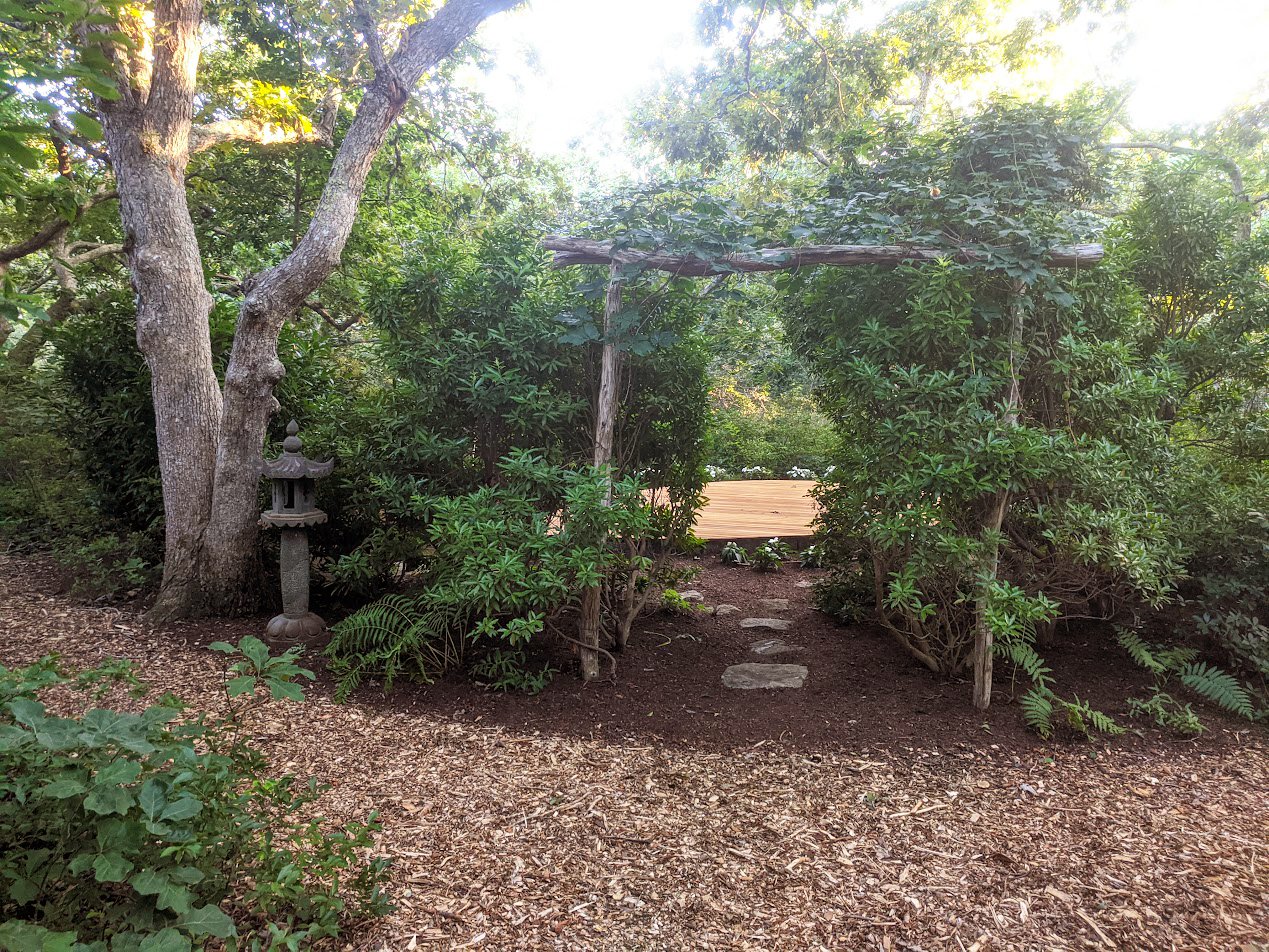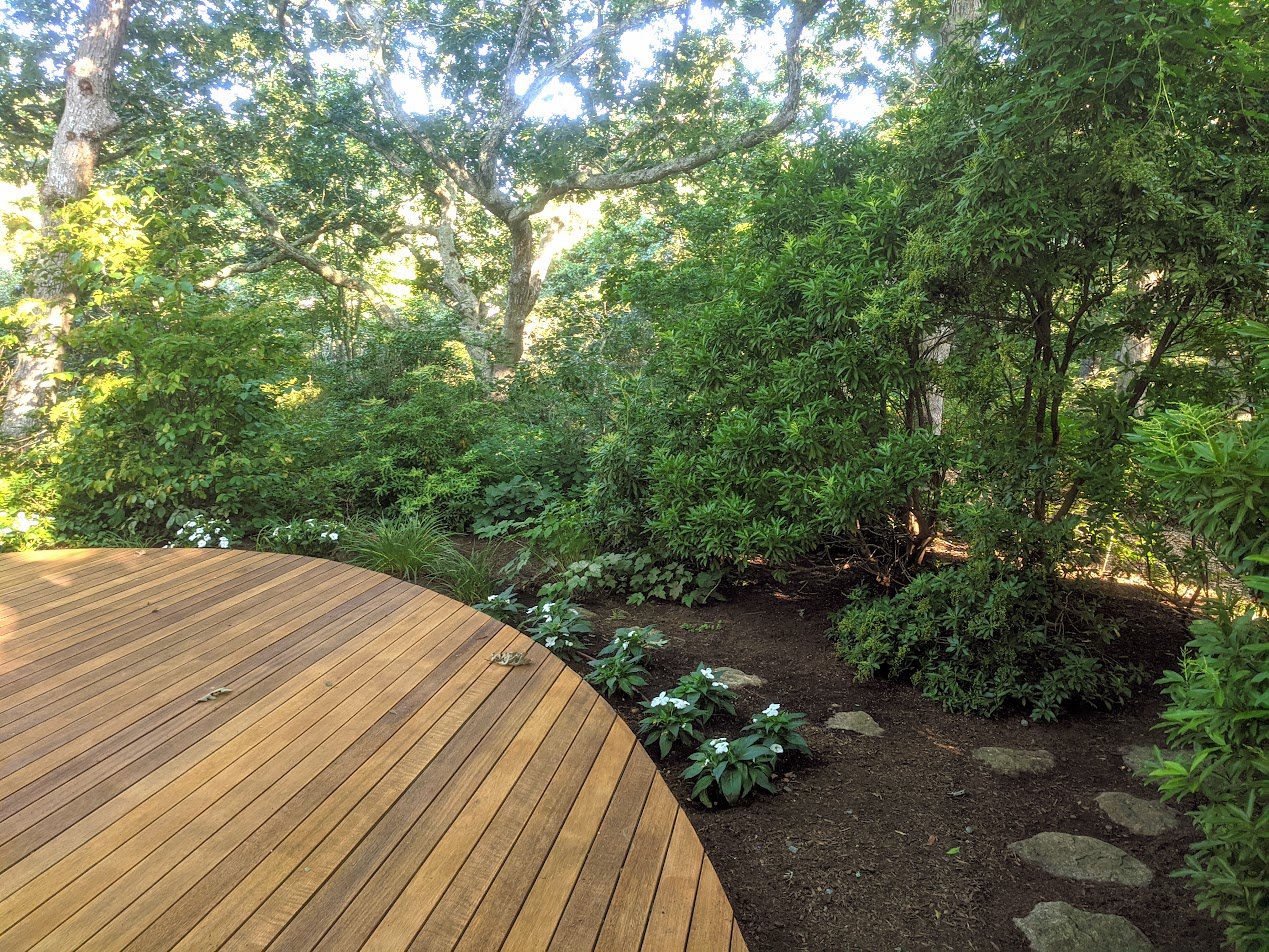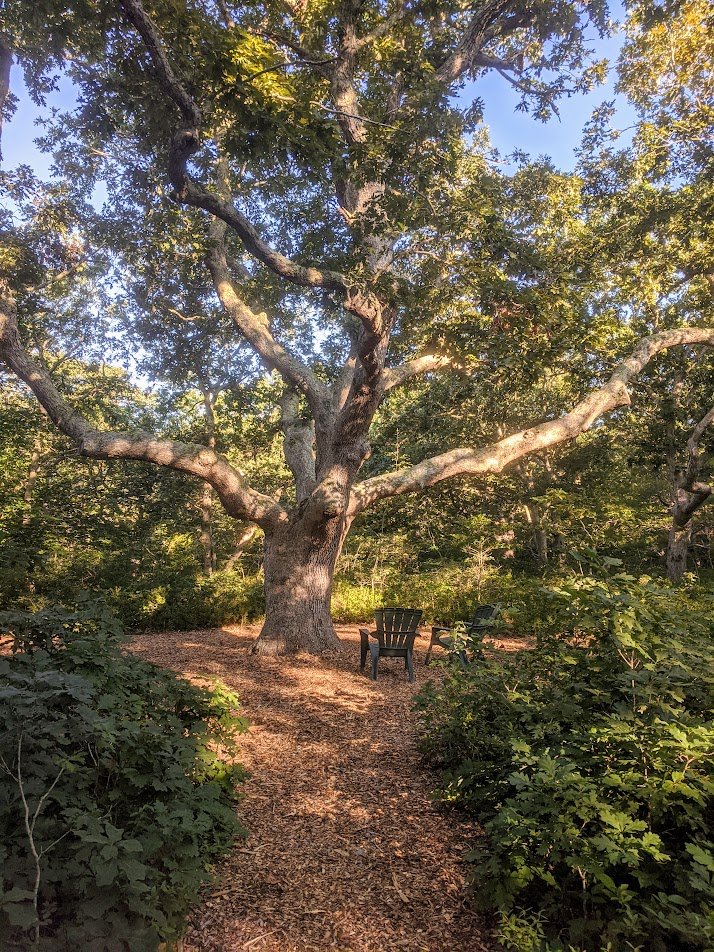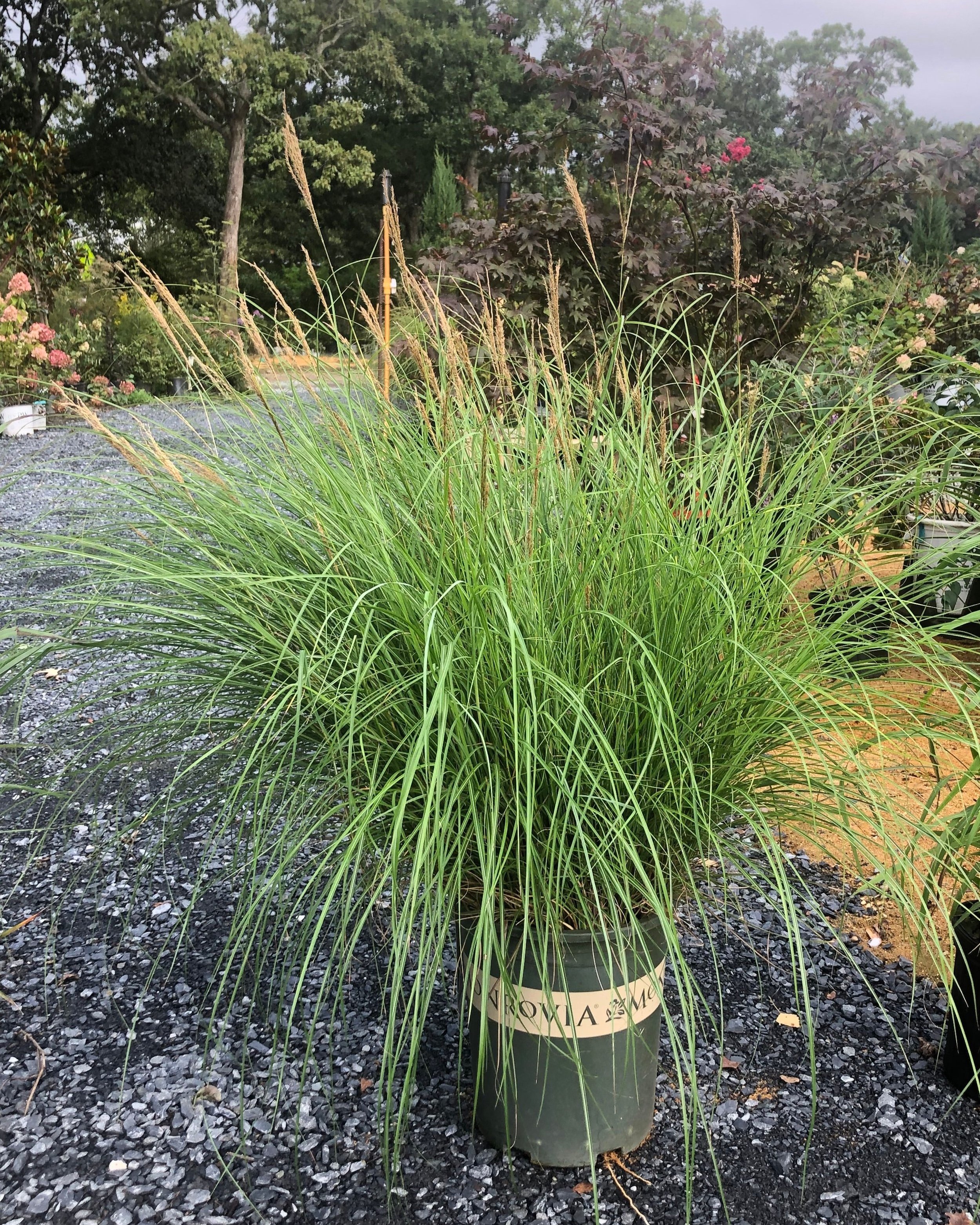AUTUMN GARDEN
by Keith Kurman / Updated by Patrick Best
Martha’s Vineyard has long, warm falls that can often linger into December, allowing the ambitious year-round gardener to extend the traditional summer bloom season by months. With insightful planning, you, too, can engineer a full and floriferous garden from early spring straight through the first frost and beyond. Indeed, as the climate continues to warm, the Vineyard gardener need only suffer a few weeks in the dead of winter without something in bloom. However, a garden like this takes careful planning. Some plants don’t begin flowering until September or later, so space must be provisioned such that they may perform to their fullest potential that late in the growing season, when other plants are competing for space. Yielding space in the middle and back of your borders can allow late-blooming perennials to lend texture and substance alongside earlier flowering annuals and bulbs and space to grow into gaps left vacant by the late spring perennial displays. Take this space allocation into consideration when planning your garden beds. Distribute your late flowering plants evenly through the border and stagger height and depth, allowing space for earlier flowers.
Autumn tones in the display gardens at Vineyard Gardens
Challenges With Late-Blooming Plants:
1. STAKING or HEADING BACK: Chrysanthemums (hardy mums), Asters, Phlox paniculata (garden phlox), Nipponanthemum nipponicum (Montauk daisy), and other late-season perennials need pinching back before early July. The extent to which this is done can vary from a conservative tip-out to a more drastic cutting back by one-third to one-half. The Anglophiles among us may know this as the “Chelsea Chop,” in reference to the Chelsea Flower Show, which is held in late spring each year. It’s important to provide support for some of the tall growing perennials early in the season to allow them to grow into your staking system. Bamboo stakes and jute twine are probably the most straightforward approach, but peony hoops and tomato cages can be very effective as well. Staking may seem a little fussy and early in the season, but you’ll be glad you did when the late season storms return.
2. DROUGHT: Irrigation requires constant monitoring, and gardens often require supplemental water during long dry spells, as we had this August. Over the course of the gardening year, any number of things can happen to disturb a basic irrigation system: from root blockage to punctured lines.
3. HERBIVORY: Across the island, it seems that few gardeners are safe from the animals who would make your garden their dinner. From deer to rabbits and chipmunks to avians, there is no shortage of hungry animals as wild habitats are consumed by new development. Regular applications of Bobbex can help dissuade deer from browsing your plants, but I have heard many reports that rabbits are unfazed by the stench and continue munching. For bunny damage, I recommend hot pepper wax (capsaicin), available as a spray and applied regularly to lower growing plants. In areas where repellants fall short, physical barriers such as caging and fencing are the best options. Sorry, up-islanders, I’m talking to you.
4. CATEPILLARS (and other insects): Many native plants play host to the caterpillar larvae of some fantastic moths and butterflies. Considering this, I always recommend doing some research before impulsively reaching for insecticide. If the damage isn’t widespread, I urge you to accept this as a sign that your garden is a part of the wider ecosystem, which is surely something to celebrate! If treatment is necessary, organic options such as Safer Soap, Neem Oil, Pyrethrum, or Bt are best.
Lespedeza thunbergii (bush clover) and Pycnanthemum muticum (mountain mint) at Polly Hill Arboretum
September border with Crape Myrtles, Vitex, and Rudbeckia
PLANTS THAT ARE LOOKING FANTASTIC IN THE GARDENS RIGHT NOW
PERENNIALS:
Asters, Eupatorium/Eutrochium (Boneset/Joe Pie Weed, both lovely natives), Vernonia (Ironweed), Chrysanthemum/Dendranthema (Hardy Mum), Agastashe (Anise Hyssop), Phlox, Anemone, Tricyrtis (Toad Lilies), Late-Blooming Hostas, Helianthus (Perennial Sunflowers), Hibiscus moscheutos (Rose Mallow), Rudbeckia (Black Eyed Susan and relatives), Kirengeshoma palmata (Yellow Wax Bells), Aconitum (Monkshood), Chelone (Turtlehead), Patrinia scabiosifolia, Pycnanthemum (Mountain Mint), Physostegia (not-so Obedient Plant), Solidago (Goldenrod), Ceratostigma plumbaginoides (Hardy Plumbago), Garden Sage (Salvia glabrescens, Salvia koyamae, Salvia uliginosa), Hardy Plectranthus/Rabdosia species, Dicentra ‘White Diamonds’ and ‘Bacchanal’ (Everblooming Bleeding Hearts), Geranium (Cranesbill), Eucomis (Pineapple Lily), Nipponanthemum (Montauk Daisy), Begonia grandis (Hardy Begonia), Persicaria, Colchicum (Fall Crocus), some Sedum, Caryopteris divaricata
ANNUALS:
Tropical Salvias (Salvia guaranitaca, Salvia leucantha, etc), Chrysanthemums, Dahlias, Cosmos, Marigolds, Rudbeckia hirta, Tithonia (Mexican Sunflower), Arctotis, Petunias, Celosia, Browallia, Ricinus, Coleus, Hedychium (Ginger Lilies)… and oh so many more!
Petunia and Coleus
Coleus and Tithonia ‘Torch’
Dahlias with Salvia guaranitaca ‘Black and Blue’
Petunia violacea
FLOWERING SHRUBS:
Hydrangea paniculata (Panicle Hydrangea), Buddleia (Butterfly Bush) and Spirea (if dead- headed throughout the season), Caryopteris x clandonensis (Bluebeard), Lespedeza thunbergii (Bush Clover), Lagerstroemia (Crape Myrtle), Vitex (Chastetree), Abelia x grandiflora, Fall-Blooming Camellias (like ‘Winter’s Snowman’), some Illicium (a highly deer-resistant evergreen for shade, look for ‘Orion’), Mahonia x media (‘Winter Sun’, ‘Charity’, and ‘Arthur Menzies’ are common), some Daphne (Daphne x transatlantica blooms through November), Hibiscus syriaca (Rose of Sharon), Hamamelis virginiana (native witch hazel blooms fragrant yellow flowers)
A yellow-leafed selection of Bluebeard (Caryopteris x clandonensis ‘Aurea’)
The fading flowers of Hydrangea macrophylla add moodiness to the garden
Hydrangea paniculata ‘Tardiva’ with Hydrangea arborescens ‘Annabelle’ in the foreground
Abelia x grandiflora
PLANTS for FOLIAGE:
Fothergilla (bottlebrush), Itea virginica (sweetspire), Clethra (sweet pepperbush) Parthenocissus quinquefolia (Virginia creeper), Rhus sp. (sumac), Hamamelis/Parrotia (witch hazel family), Grasses (Hakonechloa, Panicum, Schizachryium, Andropogon, Carex, Calamagrostis, Pennisetum, etc.), Ferns (Dryopteris, Athyrium, Osmunda, Onoclea, Polystichum, Dennstaedtia, etc.), Nyssa (tupelo), Acer (maples), Lindera benzoin (spicebush)
Viburnum dilatatum ‘Michael Dodge’ and Virginia Creeper
Northern Sea Oats (Chasmanthium latifolium)
PLANTS for FRUIT:
Viburnum, Ilex (winterberry and hollies), Callicarpa (beautyberry), Roses, Crabapples
Tea roses will continue flowering well past first frost
Japanese Beautyberry (Callicarpa dichotoma)
These lists are just a starting point and there are so many more wonderful plants to choose from. Fall is a great time to plant and many of the plants listed above are available for sale at the nursery, including many specialty plants. Come explore the late bloomers and extend your garden’s bloom season today!


















